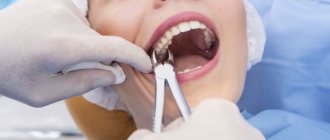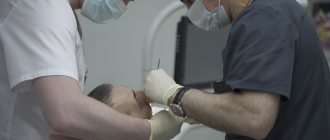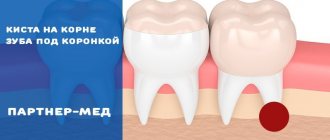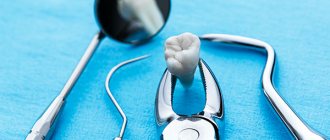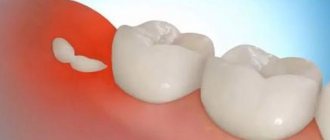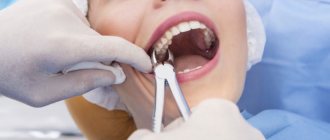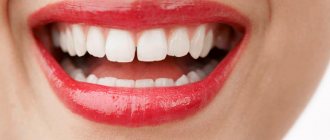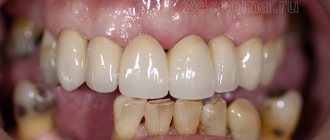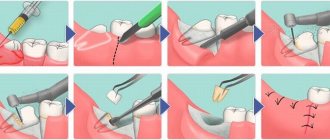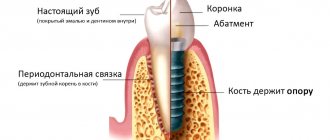MAKE AN APPOINTMENT
- Removal cost
- Indications
- Preparation
- Methods and steps
- Complications
- What to do after the procedure
- Our doctors
- Reviews
- To make an appointment with a doctor
In practice, specialists at Plomba dentistry periodically encounter cases of complete destruction of the crown of a tooth and infection of the root system, in which a purulent-inflammatory process occurs. Most often, this problem can be solved only by removing the root and remains of the tooth. But sometimes the root system can be preserved for subsequent prosthetics. How the removal will be carried out, what measures and tools will be used, the doctor will be able to decide after familiarizing himself with the clinical picture.
Indications for tooth root removal
- Complete destruction of the coronal (supra-gingival) part, affecting the root system;
- extensive purulent-inflammatory process at the root: cyst, abscess;
- longitudinal axial fracture;
- previous incorrect extraction - during removal, fragments remained in the hole, causing an inflammatory process that affected nearby tissues.
The damaged area of the tooth is easily identified visually. Additional symptoms of the need for urgent medical intervention and even possible removal of a diseased tooth are:
- twitching, throbbing pain;
- acute pain due to mechanical action - pressing, biting, chewing food;
- unpleasant odor;
- gum hyperemia;
- a purulent process is a direct indication of the need to remove the root of a diseased tooth;
- elevated body temperature.
If one or more symptoms are present, the destroyed units are removed. In some cases, incomplete removal is performed - resection of the tooth roots. This usually occurs when the root apex is affected by periodontitis, a small cyst, or granuloma. Often in such diseases the coronal part is preserved. In this case, the damaged part is removed through an incision in the gum. Subsequently, installing a crown solves the problem of restoring the chewing unit.
Contraindications
- acute diseases of the cardiovascular system;
- high blood pressure numbers;
- infectious processes in the body;
- menstruation period in women, since blood clotting time is increased, which threatens bleeding after extraction;
- acute, severe diseases of the central nervous system;
- pregnancy, lactation period;
- purulent-septic processes in the oral cavity, which provokes sepsis; mental disorders.
The possibility of extracting a diseased tooth appears after treatment of these pathologies and stabilization of the patient’s condition. In case of an emergency, the doctor performs removal in a patient with concomitant diseases. Severe pain syndrome is the cause of exacerbation of chronic pathology.
Preparing for tooth extraction
Removing a tooth or its roots is a rather complex surgical dental procedure, but it will not be difficult for the patient to prepare for it. If local anesthesia is planned to be used for pain relief, the patient should eat a large meal before visiting the dentist because:
- After removing a tooth or root, it is forbidden to eat for several hours;
- salivation after eating is significantly reduced, which will make the dentist’s work easier;
- after eating, blood glucose levels are normalized and the risk of loss of consciousness under the influence of local anesthesia is reduced
In the case of general anesthesia, on the contrary, it is necessary to abstain from eating for several hours before the removal procedure begins. Drinking alcohol before visiting the dentist is prohibited. Alcohol affects the structure of the blood and does not combine well with anesthetics, not to mention the negative impact on the human psyche and behavior.
Inflammatory and infectious diseases of any nature must be cured before surgery to remove a tooth or its roots. The dentist must be warned about the presence of allergies to certain medications, in particular to anesthesia drugs.
A normal pregnancy in general is not a contraindication to dental procedures. However, during this period the use of a number of drugs used in dentistry is prohibited, so information about pregnancy is entered into the patient’s dental record. Also, detailed information about the patient’s chronic diseases, especially heart pathologies, is recorded in the dental record.
Treatment
Depending on the picture and accompanying symptoms, the process of wisdom tooth removal is conventionally divided into simple and complex.
Easy removal
The operation begins with the administration of anesthesia.
During removal, specialists use forceps and elevators. No incisions are made for this type of intervention. The process of extracting a tooth from bone tissue lasts 2 to 10 minutes, depending on the location of the roots.
The resulting wound is treated with an antiseptic. If it is large, stitches are placed to reduce the risk of infection in the wound. A bandage with an anesthetic is applied to the area of manipulation, this is done to reduce bleeding.
Difficult removal
In the case of a complex operation to remove wisdom teeth, the necessary data is also collected and analyzed, and anesthesia is administered.
The operation is accompanied by dissection of the gums with a scalpel. To remove the tooth itself, it is cut into pieces using a drill. This is done to make it easier to remove. After removal, the resulting wound is treated with an antiseptic and then sutured.
Depending on the location of the tooth, the operation can take from 15 minutes to an hour and a half.
After the manipulations, regardless of their complexity, the doctor must consult the patient on wound treatment and, if necessary, prescribe medication.
Removal using ultrasound
In some cases, and with the appropriate equipment, a tooth can be removed using an ultrasonic scalpel. It allows for contactless intervention. Wounds with these manipulations heal faster, and the risk of complications is reduced.
Excision of a dental pocket with preservation of the tooth
There is a disease of the wisdom tooth in which its removal is called into question. This is an inflammation of the dental pocket, which is caused by bacteria that get under the gums. With this pathology, the doctor dissects the hood without affecting the tooth itself. The area of inflammation is treated with antiseptics.
The process of tissue healing and restoration, as a rule, proceeds quickly and the need for removal disappears. If the so-called pericoronitis has reached the stage at which ulcers form on the mucous membrane, the wisdom tooth is removed.
Methods and stages of removing teeth or their roots
Most often in modern dentistry, only two methods of removing teeth or their roots are practiced:
- removing a tooth from the gum using forceps;
- rocking of the tooth and its rotation around its axis by elevators.
In cases where the roots are deep, the gum tissue can be cut with a scalpel. In general, the process of removing teeth or their roots is divided into the following stages:
- separation of the round ligament from the neck of the tooth (ligamentotomy);
- applying (installing) forceps to the tooth;
- advancing the fixing elements of the forceps under the gum;
- final fixation of the forceps;
- rotation (rotation) or luxation (swaying) of the tooth;
- extracting a tooth or its roots from the socket.
Main stages of the operation
- Syndestomy;
- Forceps delivery;
- Advancing the forceps to the area of the tooth neck under the gingival margin;
- Fixation;
- Luxation (rotation);
- Traction (extraction).
When removing a tooth with forceps, you must follow the following basic rules:
- Apply the cheeks of the forceps only to the vestibular and internal surfaces.
- The longitudinal axis of the cheeks of the forceps must coincide with the longitudinal axis of the tooth being removed.
- Avoid placing the tip of the cheeks of the forceps on the edge of the alveolar process and avoid subperiosteal resection of the edges of the socket.
- When dislocating a tooth, you must remember the possibility of a fracture in the neck or at the apex of the root.
When removing the upper teeth, the patient sits in a dental chair with the back slightly reclined, resting the back of his head against the headrest. The chair is raised to a position in which the tooth to be removed is at the level of the doctor’s shoulder joint. The doctor stands to the right and in front of the patient. When removing lower teeth, the chair is lowered so that the tooth being removed is at the level of the elbow joint of the doctor’s lowered arm. When removing lower incisors, canines, premolars and left molars, the doctor stands to the right and in front of the patient; when removing right molars, the doctor stands behind and slightly to the right.
Common complications after tooth extraction
Tooth extraction is essentially a full-fledged surgical intervention. Symptoms such as pain and inflammation in the surgical area are considered normal for the rehabilitation period, unless they are too severe and are not eliminated 3-4 days after tooth (root) extraction. The rehabilitation period may also be characterized by increased body temperature and enlarged lymph nodes.
More serious clinical complications include:
- renewed bleeding from the socket after tooth (root) removal - methods for eliminating minor bleeding can be discussed by the dentist; in case of intense bleeding, it is necessary to urgently consult a specialist;
- incomplete removal of the tooth root - the presence of residues is diagnosed by x-ray and follow-up and quickly eliminated;
- alveolitis is a dangerous, but easily eliminated by antibiotics, inflammatory process in bone tissue, characterized by a significant increase in body temperature, swelling, severe pain, and requires immediate treatment, as it can lead to sepsis.
In the first hours after removal, the patient should not eat. Cotton swabs from the surgical area can be removed 30 minutes after completion of all manipulations. In the first days after surgery, it is not recommended to eat sour, sweet, salty, very chilled or hot foods. Short-term cold compresses can relieve pain in the first days after tooth extraction.
Tooth extraction is a last resort in modern dentistry. A qualified specialist must strive by all means to save the tooth even in the most difficult cases.
The final stage of restoring oral health is not the removal, but the replacement of teeth (except for wisdom teeth).
Caring for your oral cavity after surgery
The speed of wound healing depends on how you follow the rules of hygiene. Also, proper care allows you to avoid infection of the hole and aggravation of problems.
- Do not eat food for the next 4 hours after the procedure. The first time, try to eat something soft: cream soup or puree. Under no circumstances should you eat hot food. The same goes for drinks.
- Don't touch the hole. Neither with language, nor with any objects. For effective healing, it is very important to maintain the integrity of the blood crust that has formed on the wound.
- You won't be able to brush your teeth for a few days. To keep your mouth clean, rinse your mouth with a baking soda solution (half a teaspoon per glass of water). A decoction of chamomile, calendula or oak bark also disinfects and promotes healing.
- During the first weeks, brush your teeth only with a soft or ultra-soft toothbrush so as not to irritate your gums. Use the toothpaste recommended by your doctor - it will promote healing.
- For two to three days after surgery, try to refrain from smoking, drinking alcohol, and using the sauna. All this can negatively affect the condition of the crust while it has not yet hardened.
Full recovery will occur in 2-3 weeks, then you can return to your normal rhythm of life. In complex surgeries where you have to wait for bone tissue to grow, recovery may take up to 14 weeks . But still, after the first three, you will be able to eat normally, and your gums will not be sensitive to temperature.
What to do after tooth extraction
The operation cannot be prescribed without an X-ray examination, which makes it possible to determine the amount and degree of root destruction and the extent of the inflammatory process. Before root removal, the patient is given anesthesia, after which the gum is separated from the neck of the tooth. The surgeon's further actions are determined by the clinical picture. Dentists call the most difficult operation the removal of the deep and often twisted roots of the “figure eight” – the eighth tooth in the dentition. But the specialists of the Plomba clinic successfully cope with this too.
Is it possible to remove a molar tooth yourself?
Trying to remove a molar tooth yourself is extremely dangerous. The only exception is very severe tooth looseness. It should be borne in mind that complete removal even in this situation will not work. You will simply break off the body of the tooth from the root, and nothing more. In any case, after such an independent removal, you need to visit a dentist, who will determine what should be done next. Sometimes an artificial tooth is installed at the root, and it can last for more than one year. If the root has defects, then it has to be removed.
There are situations when you have to remove a child’s very loose baby tooth at home. In this case, you should thoroughly brush the baby’s teeth and disinfect the oral cavity. Then you should wrap your fingers in sterile gauze, loosen the tooth thoroughly, and only then try to pull it out. If this was not possible on the second attempt, then the child must be taken to the dental clinic in any case.
If you have successfully removed the tooth from the socket, then you must firmly place a gauze swab in the socket and leave it there for 30 - 40 minutes. In the next two hours, the child should not be allowed to eat or drink.
Even if the removal was successful, the baby still needs to be shown to the dentist. This is the only way to protect your child from possible complications.
